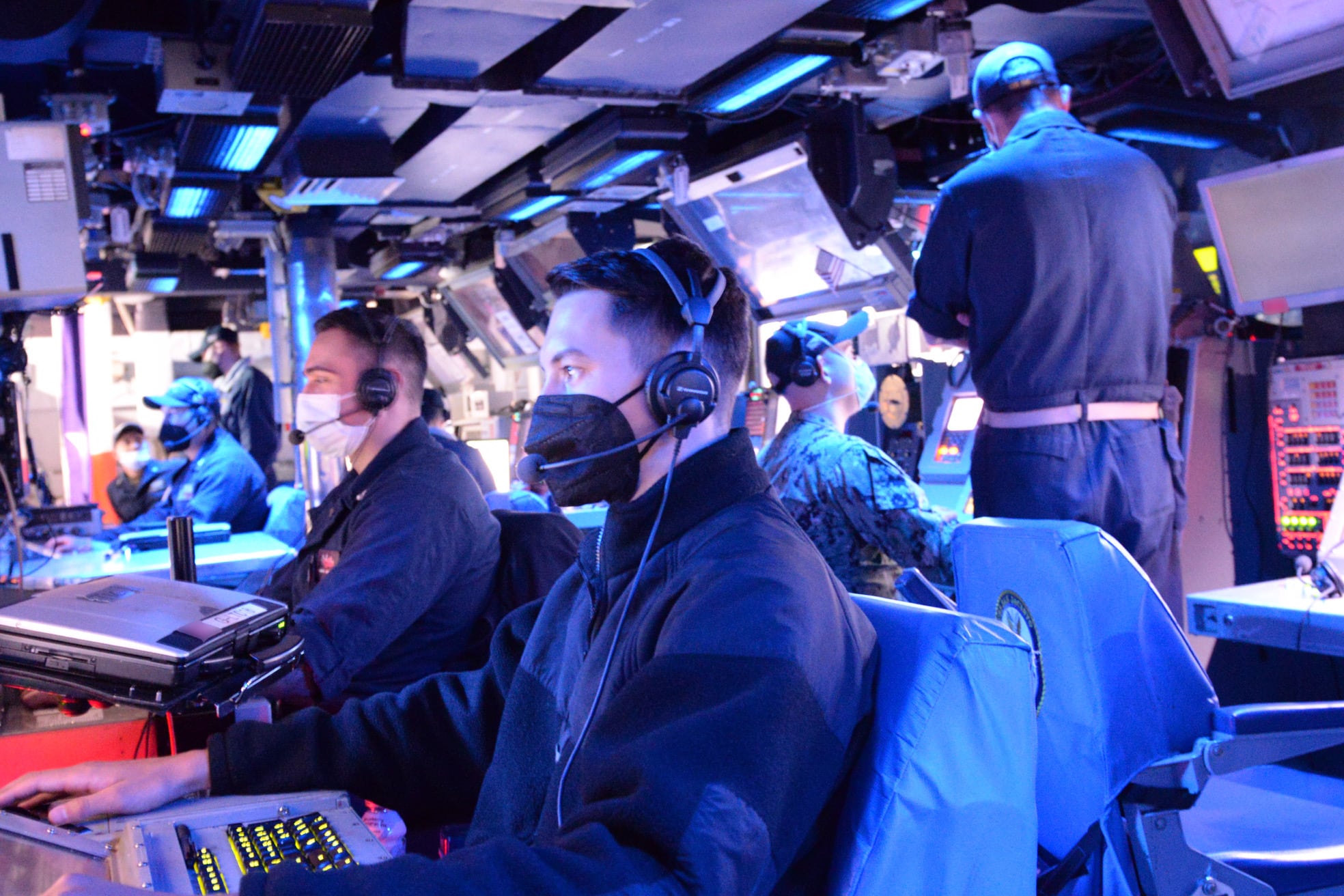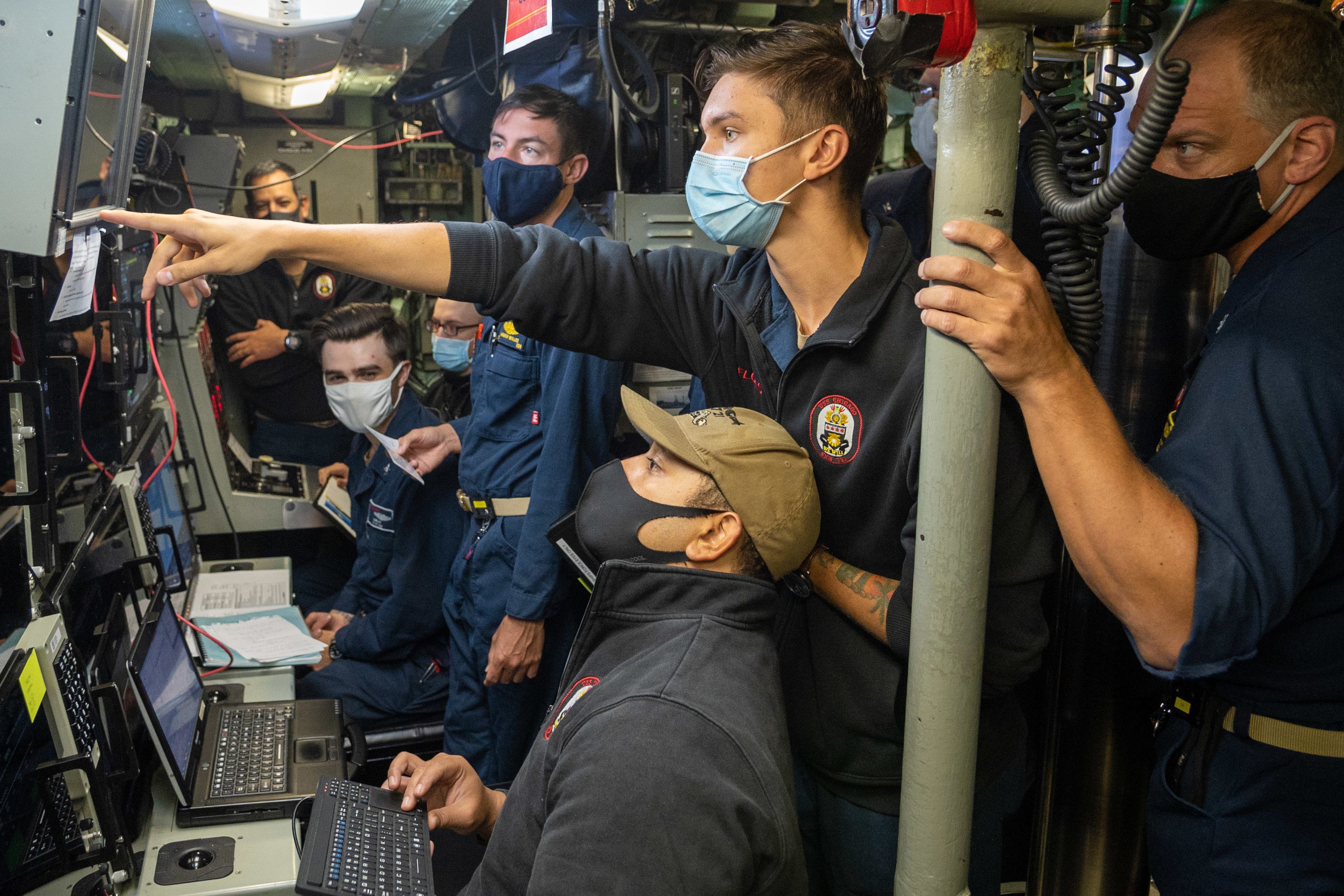The decommissioned guided-missile frigate Ingraham was sunk Sunday by joint forces as part of Large Scale Exercise 2021.
The multi-domain exercise, which involved long-range maritime strikes, was conducted in the Hawaiian Islands Operating Area, according to the Navy.
“Lethal combat power was effectively applied to a variety of maritime threats over the last two weeks in a simulated environment as part of the Navy’s Large Scale Exercise and expertly demonstrated Sunday with live ordnance,” said U.S. 3rd Fleet Commander Vice Adm. Steve Koehler in a Navy news release.
“The precise and coordinated strikes from the Navy and our Joint teammates resulted in the rapid destruction and sinking of the target ship and exemplify our ability to decisively apply force in the maritime battlespace,” Koehler said.

The sinking exercise involved units from the Carl Vinson Carrier Strike Group; Submarine Forces Pacific; 1 Marine Expeditionary Force, 3rd Marine Air Wing, III Marine Expeditionary, 3rd Marine Division; and the Army Multi-Domain Task Force.
According to Lt. Gen. Eric Smith, head of Marine Corps Combat Development Command, the service planned to launch Naval Strike Missiles off the back of a Remotely Operated Ground Unit for Expeditionary (ROGUE) fires vehicle.
During the live-fire exercise Sunday — in concert with Navy and the Air Force attacks on the scrapped hull — two NSM missiles traveled 100 nautical miles before striking their target.
That combination of missile and vehicle, collectively known as the Navy Marine Expeditionary Ship Interdiction System, or NMESIS, will be able to avoid enemy detection within the first island chain of an enemy in the Pacific and strike at enemy vessels wherever they appear, Smith said.
Other weapons systems were also employed against the frigate.
According to a spokesperson from Pacific Fleet, the U.S. Third Fleet’s Carrier Strike Group One launched F/A-18E/F Super Hornets to test the Joint Standoff Weapon, and F-35C Joint Strike Fighters employed laser-guided weapons.
Likewise, P-8A Poseidon maritime patrol and reconnaissance aircraft tested the Harpoon weapon system, and the fast-attack submarine Chicago fired a UGM-84 anti-ship Harpoon missile and a Mark 48 Advanced Capability torpedo.
Additionally, a division of F/A-18Cs from Marine Fighter Attack Squadron 323 delivered precision lethal fires with AGM-84 Harpoons as part of the sinking exercise, a spokesperson for U.S. Marine Corps Forces, Pacific told Marine Corps Times.
The Ingraham was in service from 1989 until 2015 when it was decommissioned.
Navy guidelines require that hulks must sink at least 6,000 feet beneath the water, and at least 50 nautical miles away from shore during sinking exercises. The hulks undergo a thorough cleaning and inspection beforehand to adhere to Environmental Protection Agency guidelines, the Navy said.
The Navy and Marine Corps wrapped up Large Scale Exercise Monday. The exercise, labeled the “biggest exercise we’ve done in a generation” by Chief of Naval Operations Adm. Mike Gilday, involved U.S. Fleet Forces Command, U.S. Pacific Fleet and U.S. Naval Forces Europe.
RELATED

The Navy and Marine Corps’ goal for the exercise was to test out modern warfighting concepts on a global scale, like distributed maritime operations and expeditionary advanced base operations, and understand what those concepts mean for the fleet.
“Although there will be training value, this exercise is about validating, refining, testing warfighting concepts,” Marine Corps Col. Nicholas Nuzzo, deputy exercise director, told reporters Aug. 5.





